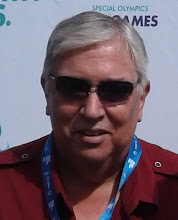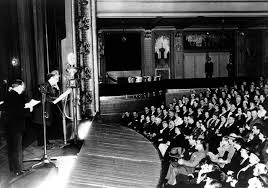"Whether to Ease Into the Mainstream or Set Apart": The Way It Was, 20 January
1954---Chicago advertising figure W. Leonard Evans founds the first black-oriented American radio network, the National Negro Network, which begins with forty stations and a potpourri of programming, including the first black soap opera that also featured an all-black cast, including a Tony award-winning singer-actress and a future Emmy-winning actress.
Evans has planned the project carefully, with the staggering enough growth of black-oriented radio stations from 1943 (only four stations in the United States) to 1953 (the number by then was 270), according to Time.
Evans has also made it clear enough that while his network plan hooked aroud black-oriented programming, it would not be a segregated enterprise in the least. So much so that he was actually uncertain whether to emphasis the network name in programming sign-offs.
. . . Evans is not yet sure whether he will use "This is the National Negro Network" as a sign-off line: "The question is whether to ease our programs quietly into the mainstream of U.S. radio or to set them apart as Negro shows, thereby perhaps driving off potential white listeners."Evans, 39, a husky (6 ft. 2 in., 195 lbs.) Negro graduate of the University of Illinois, will have an interracial board of directors, but he is operating in the interest of efficiency, not tolerance ("Experience has shown that stations with black and white staffs are the most successful in reaching the Negro market"). By next fall he plans full network coverage of Negro sports, news and public affairs. Says Evans: "We're starting small, but we're going to wind up big."---Time, 28 December 1953.
The National Negro Network’s earliest programming includes a musical variety show, Tan Town Jamboree, hosted by disc jockey Nat D. Williams. But its best-remembered program, arguably, will be the popular soap, The Story of Ruby Valentine---which graduates from a long-running CBS soap, We Love and Learn (born As the Twig is Bent in 1942).
In 1955 the locale was changed from a dress shop to a Harlem beauty parlour, and the show became the first Negro "soap opera" (quotation marks in the original) with an all-Negro cast in radio.---Frank Buxton and Bill Owen, The Big Broadcast 1920-1950 (New York: Flare/Avon, 1971).
The Story of Ruby Valentine stars in the title role Juanita Hall, once a blues singer who became a stage singer-actress and won a Tony as Best Supporting Actress for her portrayal of Bloody Mary in South Pacific, a role she will repeat in the film version of the Rodgers & Hammerstein musical. She becomes familiar for playing multiple non-white races on stage and in film, including Madame (Auntie) Liang in another Rodgers & Hammerstein-based film, Flower Drum Song (1961).
The Story of Ruby Valentine also features future Emmy winner (Best Supporting Actress, Miniseries or Movie, 1991, for Decoration Day Ruby Dee. Departing from the usual tradition of organ music, this soap’s music is provided at the piano by Luther Henderson, a respected if too-often uncredited jazz arranger, who becomes credited in due course for helping shepherd some of Duke Ellington’s more ambitious compositional efforts in the 1940s and 1950s, before working for television offerings such as The Bell Telephone Hour, The Ed Sullivan Show, and stage productions such as Flower Drum Song, No, No, Nanette, and Ain’t Misbehavin’.
The bad news proves to be that the National Negro Network---perhaps inevitably, certainly sadly, given its time and place---will have little if any fortune attracting major advertisers and will fold before very long.
CHANNEL SURFING . . .
1950: TO TELL THE TRUTH---Liz's penchant for exaggeration ("Liz, as long as we're bringing these things up, I never did believe you swam the English Channel") almost gets George fired, but Liz telling the truth, the whole truth, and nothing but the truth does almost as much damage---until an embarrassing business secret is exposed inadvertently---on tonight's episode* of My Favourite Husband, starring Lucille Ball, Richard Denning, Gale Gordon, Bea Benaderet, and guest stars Sam Hearn and (future host of The $64,000 Question) Hal March. (CBS.)
* -- For reasons unknown, the file will come up with the title "Liz and the Green Wig." Beware: A green wig is mentioned nowhere in the episode, not even in jest.
1956: STRINGS ATTACHED---A car hauled from a Philadelphia swamp, a missing body, and the violin by which he became one of the world's top virtuosi, has the arch insurance investigator puzzled---especially when he accidentally discovers a violin identical to the one found in the swamp, in the conclusion of "The Ricardo Amerigo Matter," on tonight's episode of Yours Truly, Johnny Dollar, starring Bob Bailey as the fifth and final Johnny Dollar.(CBS.)












0 Comments:
Post a Comment
Subscribe to Post Comments [Atom]
<< Home